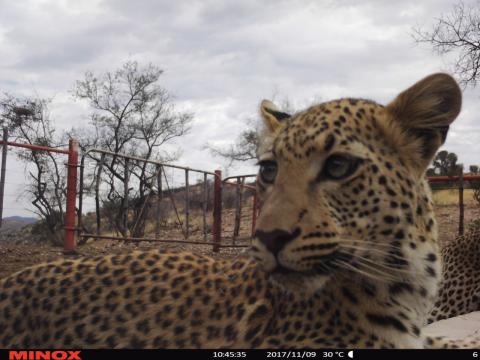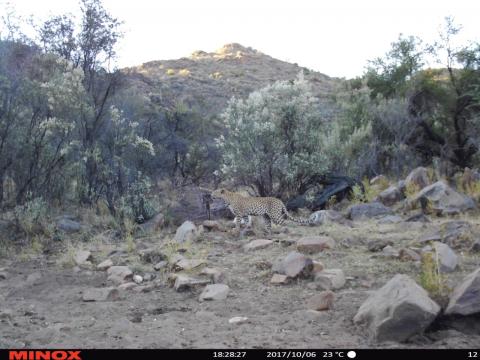SCI Foundation project improves our understanding of leopard populations in Namibia
In partnership with the Namibia Professional Hunting Association (http://www.napha-namibia.com/home/) and other conservation groups, the SCIF Department of Science-based Conservation recently supported a nationwide survey of leopard populations in Namibia. Well-designed and scientific surveys to estimate population density and parameters such as age and sex ratios are required to ensure that hunting programs for leopards and other carnivores are sustainable. Recent decisions at the CITES Conference of the Parties in Geneva require periodic review of export quotas for leopards and other Appendix I species.
Scientific data will be critical in maintaining these quotas and in allowing sustainable hunting of leopards to continue—and multiple science-based organizations have emphasized the importance of well-regulated hunting to conservation efforts in Africa and elsewhere. SCI Foundation has identified leopard conservation as a priority due to ongoing threats to sustainable use of leopards from western anti-use groups, with consequent damage to rural livelihoods in Africa and loss of critical support for conservation.
The surveys included of remote camera surveys and landowner questionnaires across the range of leopards in Namibia. The results showed a healthy and robust population of between 11,000 and 12,000 leopards that occupies approximately 70% of their historic range in the country. Using the camera survey data and habitat information, the authors derived a leopard density map that encompasses the entire country. Leopard populations in two of the three survey areas had increased since the last nationwide surveys in 2011.
Landowner questionnaires showed that human-leopard conflict and consequent removal of leopards and other carnivores remain a significant issue for predator populations. They also revealed that attitudes of landowners towards leopards were more positive in areas where regulated hunting of these animals was available and represented a supplementary income source.
With its well-developed community conservancy system and healthy wildlife populations, Namibia remains a foremost example for how sustainable use of wildlife can benefit rural communities while also contributing to long-term conservation of wildlife. Leopards in Namibia are doing well, but conflict with humans and livestock represents a continuing challenge. SCIF is proud to support Namibia and other African countries in their conservation efforts through sustainable use of their abundant wildlife resources.




